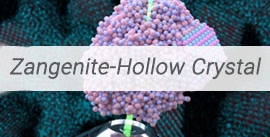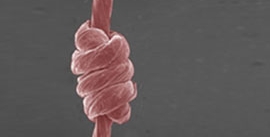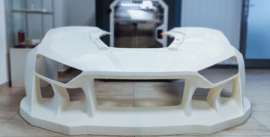 جدید
جدیدعلم کربن در سال 2016: وضعیت، چالشها و دورنما Carbon science in 2016
علم کربن در سال 2016
علم کربن در سال 2016: وضعیت، چالشها و دورنما
[box type=”shadow” align=”alignright” ] با رسیدن به سال 2016، علم نانو در حال بالغ شدن است و کشف گرافن ده ساله شده است. با کشف فرمهای اولیهی کربن با ابعاد کم منظم – فولرنهای صفربعدی، نانولولههای 1 بعدی و گرافنهای دوبعدی- تحول عظیم بعدی دیگر در کربن چیست؟ آیا ما در سال 2016 به نقطه ای رسیدهایم که باعث اعلام ” پایان علم کربن ” شود؟[/box]
[box type=”success” width=”1024″ ] ترجمه از گروه ترجمه ایران مواد
حرفه ای ترین تیم ترجمه مهندسی مواد کشور
[/box]
امسال 30امین سال کشف C60، فولرن باکمینستر میباشد. این کشف در سال 1985 دورهی بینظیری در علم کربن آغاز کرد که باعث ترقی پژوهش در مورد نانوتیوبهای کربن، ایزولهکردن و شناسایی گرافن، و رشد نمایی پژوهشهای جامعهی بینالملل که میتوان آنرا بزرگترین جنبش در علوم فیزیک در چند دههی اخیر دانست، شد. مواد کربنی باعث جنبش در علوم را رهبری میکند و به عنوان مدلهایی از ساختارهای بیعیب هستند که سنتز مواد دیگر با ساختارها و تقارنهای مشابه را الهام میبخشد.
ما خوششانس هستیم که در مرکز این میدان تحقیقاتی بسیار جذاب قرار داریم. پژوهشهای اخیر روی مواد کربنی منجر به گرفتن دو جایزهی نوبل (برای فولرنها و گرافن) و دو جایزهی کاولی در زمینهی علم کربن و نانو (برای ام.درسلهاوس . اس.ایجیما برای کار روی نانولولههای کربن) شده است. پژوهش در مورد نانومواد کربن، این ژورنال را در مسیرهای متعددی پیش برده است، و مسئول قسمت اعظمی از رشد و موفقیت آن است.
با رسیدن به سال 2016، علم کربن و نانو در حال بالغ شدن است و کشف گرافن ده ساله شده است. با کشف فرمهای اولیهی کربن با ابعاد کم منظم – فولرنهای صفربعدی، نانولولههای 1 بعدی و گرافنهای دوبعدی- تحول عظیم بعدی دیگر در کربن چیست؟ یکی از نظریه ها توسط فرانسیس فوکویاما در مقالهی او در سال 1989 با عنوان پایان تاریخ، ذکر شده است که در آن بررسی شده است که آیا پایان جنگ سرد به معنی پایان کشمکشهای سیاسی در شکل ترجیحی نهایی دولت است؟ آیا ما به نقطهی مشابهی در سال 2016 رسیدهایم که باعث اعلام ” پایان علم کربن ” شود؟
تیم ویرایش ما به صورت قاطعانه بر این باور است که جواب “منفی” است و بسیاری از چالشهای جالب توجه باقی مانده است. آلوتروپهای متعدد جدیدی وجود دارند که باید سنتز شوند. همچنین چالشهای بزرگی در ترکیب شکلهای با ابعاد کم پایه در ساختارهای سهبعدی پیچیده وجود دارد. کارهای زیادی برای توسعه و بهینهسازی کاربردهای نانولولهها و گرافن، و مسائلی در بارهی محیط جهانی باعث تجدید حیات توجه به فیبرهای کربنی برای تکنولوژیهای انتقال با وزن کم و کربنهای متخلخل برای ذخیرهی انرژی و محافظت از محیط زیست شدهاست.
تصمیم ما بر این است که با ترکیب ایدهها و نماها موجود برگرفتهشده از هر یک از زیرشاخههای مجزا، از یک شکل جدید ویرایشی استفاده کنیم تا این تیم ویرایشی ایجاد شود. قضاوت بر عهدهی خوانندگان است تا میزان مفیدبودن خروجی را که توسط هر قسمت به صورت جداگانه تولید میشود، ارزیابی کنند. ابتدا، مائوریسیو تورنس و یونگشنگ چن با تفکرهای آنان روی “مواد پایهی نانوکربنی با پیوند کوالانسی، شروع کردند.
توشیاکی انوکی قسمتی دارای عنوان “از مولکولهای آروماتیک تا گرافن بینهایت – شیمی و فیزیک پلزن” را دنبال میکند. یوان چن، جدیدترین ویراستار مجله، در مورد ” نانولولههای کربنی تک دیواره با خلوص بالا: رشد، دستهبندی و کاربرد” کار میکند. آلبرتو بیانکو و روبرت هارت جنبههای نظری خود را روی “رفتار بیولوژیکی و ایمنی نانومواد کربن – ملزومات پژوهشهای در حال انجام” و نیخیل کوراتکار همراه با مهمان مجله، راحول موخرجه دربارهی “اهمیت عملکرد پارامترهای حجمی در سیستمهای ذخیرهی انرژی” بحث میکنند.
همچنین در مناطق مهم کاربردهای انرژی، ویراستار جدید ما الیزابیتا فراکویاک دربارهی “نقش خصوصیات بافت کربن در سیستمهای ذخیرهی انرژی” بحث میکند. مارک مونتیوکس و چون گرائی پارک تشریح تاریخ و جهت پژوهشهای حاضر در “الیاف کربنی” میکنند و جین ژانگ دربارهی “گرافینها به عنوان آلوتروپهای جدید کربن”مینویسد. در نهایت، چونگ راوی پارک و مهمان مجله، یرن سئونگ کیم دربارهی “نانوکامپوزیتها” مینویسند. مجله با یک قسمت توسط روبرت هارت دربارهی جنبههای مختلف ارتباط بین “مواد کربنی و محیطزیست جهانی” پایان مییابد. امیدواریم که خوانندگان ما این اطلاعات و دیدهای درونی را با ارزش ببینند.
[box type=”info” align=”alignright” width=”1124″ ]منبع : materialstoday.com
ترجمه : کاوه نبی [/box]
[divider]
Carbon science in 2016: Status, challenges and perspectives
This year we enjoyed the 30th anniversary of the discovery of C60: Buckminsterfullerene. This discovery in 1985 began a unique period in carbon science that saw the rise of carbon nanotube research, the isolation and characterization of graphene, and the exponential growth of international nanotechnology research that has arguably been the largest movement within the physical sciences over the last several decades. Carbon materials have led this general science movement, serving as models of structural perfection that have inspired synthesis of other materials with similar structures and symmetries.
We are fortunate in Carbon to be at the center of a very exciting field. Recent research on carbon materials has led to two Nobel Prizes (for fullerenes and graphene), and two Kavli Prizes in Nanoscience (to M. Dresselhaus and S. Iijima for work on carbon nanotubes). Carbon nanomaterials research has transformed the journal in many ways, and is responsible for much of its recent growth and success.
As we approach 2016, however, nanoscience is maturing as a field and the graphene discovery is ten years old. Having discovered the archetypical low-dimensional carbon forms – 0D fullerenes, 1D nanotubes, and 2D graphene, what will be the next “big thing” in carbon? One is reminded of Francis Fukuyama’s 1989 essay, The End of History, which explored whether the end of the Cold War meant the end of political struggles over the final preferred form of government. Have we reached a similar point in 2016 that would cause us to declare the “End of Carbon Science”?
Our editorial team firmly believes the answer is “no” and that many exciting challenges remain. There are various new allotropes to be synthesized, and there are major challenges in combining our basic low-dimensional forms into more complex 3D architectures. Much work is needed to develop and optimize applications of nanotubes and graphene, and concerns about the global environment are causing a resurgence of interest in carbon fibres for lightweight transportation technologies and porous carbons for energy storage and environmental protection.
We decided to try a new editorial form by combining our ideas and perspectives, each of us drawing from our individual subfields, to produce this group editorial. We leave the readers to judge the usefulness of the outcome, which is represented by the individual sections below. First, Mauricio Terrones and Yongsheng Chen begin with their thoughts on “Covalently bonded nanocarbon-based materials”.
Toshiaki Enoki follows with a section entitled “From aromatic molecules to infinite graphene – bridging chemistry and physics”. Yuan Chen, the newest Carbon editor, writes about “High-purity single-walled carbon nanotubes: growth, sorting, and applications”. Alberto Bianco and Robert Hurt provide their perspectives on the “Biological behavior and safety of carbon nanomaterials – ongoing research needs” and Nikhil Koratkar with guest Rahul Mukherjee discuss “The importance of volumetric performance parameters in energy storage systems”.
Also in the important area of energy applications, our new editor Elzbieta Frackowiak discusses the “Role of carbon textural properties in energy storage systems”. Marc Monthioux and Chong Rae Park describe the history and current research directions in “Carbon fibres”, and Jin Zhang writes about “Graphynes as new carbon allotropes”. Finally, Chong Rae Park and guest Yern Seung Kim write about “Nanocomposites”, and we end with a section by Robert Hurt on the various aspects of the connection between “Carbon materials and the global environment”. We hope our readers will find these personal opinions and subjective outlooks valuable.









دیدگاه کاربران